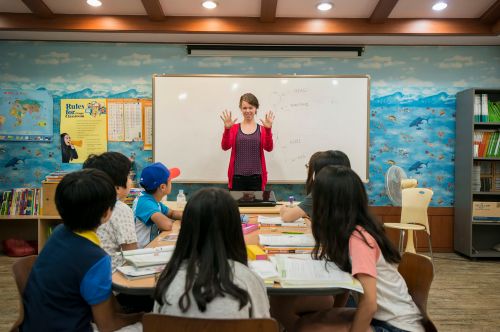

The main goal of Teaching English as a Foreign Language (TEFL) is to help learners improve their language skills, but TEFL goes beyond grammar rules and vocabulary lists. It plays a huge role in building bridges between people from different countries and cultures. It helps both teachers and students learn from each other in meaningful ways. Essentially, TEFL is about connecting with the world, experiencing new cultures firsthand, and making a real impact on people’s lives.
English is the common language for business, technology, and finance across the globe. Therefore, the growing need for English language skills has opened up many TEFL opportunities worldwide. Whether it’s in the busy cities of Asia, the lively regions of Latin America, the historic centers of Europe, or the diverse communities of the Middle East, educators can find roles that match their interests and goals.
Sometimes, it’s easy to forget how the environment around us affects the way we live, work, and learn. As teachers step into classrooms and communities that are completely different from their own, they might also be stepping into a new and more meaningful personal and professional life. Through TEFL, you can get the unique chance to live and work in new cultural settings, immersing yourself in traditions, customs, and perspectives you might never encounter otherwise.
The origins of TEFL
The teaching of English as a Foreign Language (TEFL) has evolved considerably over time, changing the way people teach and learn through a range of methodologies that reflect different theories of language learning and learners’ needs and cultures. It’s important to understand where it all began, to figure out the impact of TEFL in our modern world.
Note: The term ‘methodology’ refers to the approaches, methods, and procedures used in teaching, each with distinct techniques and objectives.
The Grammar-Translation Method was one of the earliest methods used to teach English. Originally used for teaching classical languages such as Greek and Latin, this method was applied to modern language teaching in the 19th century. This approach focused mainly on reading and writing. The lessons were teacher-centred and delivered in a lecture-style in the students’ native language. They memorized grammatical structures and translated academic texts, but there was little to no emphasis on speaking, listening, or pronunciation.
In an attempt at dealing with the grammar-translation downsides, teachers found a way to introduce elements of listening and speaking to their lessons. Around 1900, the Direct Method was developed. It aimed to improve listening and speaking skills by conducting lessons entirely in the target language. Teachers used real-life objects, and visual aids to help students practise the new language in more realistic scenarios. This method discouraged translation and instead promoted language immersion, encouraging learners to figure out grammar rules by themselves and to use.. It gained widespread recognition in the 1970s when language schools like Berlitz and Inlingua adopted it as their primary teaching approach.
An improved version of this method was the Audio-Lingual Method. Also known as the ‘Army Method,’ it emerged during World War II to address the urgent need for soldiers to learn foreign languages quickly. This method was based on habit formation through repetition and reinforcement. It focused on drilling grammar patterns without explicit explanations, helping learners memorise structures through repeated practice. Like the Direct Method, it avoided the use of the students’ first language, but its highly controlled drills limited opportunities for spontaneous language use.
The evolution of TEFL
SInce the 80s, English language teaching (ELT) has shifted toward Communicative Language Teaching (CLT), which prioritises fluency over rigid grammatical accuracy. The goal of CLT is to equip learners with the skills needed to interact in everyday situations. With lessons centered around practical functions–such as booking a hotel room or writing an email–teachers guide learners navigate real-world communication. Instead of acting as a traditional instructor, the teacher takes on the role of a facilitator with the help of interactive tasks and authentic materials. Activities such as role-plays and interviews encourage collaboration and independent language use. This way of teaching makes the learning process more engaging and meaningful.
A two-way cultural exchange
Whether you are new to this field or a seasoned TEFL teacher, a TEFL journey is never without its challenges. Language barriers can initially impede communication, adapting to other cultures can sometimes be overwhelming, and different educational systems and teaching methodologies can also present a learning curve. These challenges require you to develop creative strategies for conveying information and building rapport, demanding flexibility and adaptability. Dealing with cultural differences in the classroom and daily life requires sensitivity and open-mindedness. As you explore teaching English abroad, these new situations push you to become more tolerant and resilient and will help you understand more about yourself and the world around you.
As a TEFL teacher, you are in the unique position where both teachers and students benefit, learning from one another. Students learn from their teachers not only a useful language, but also a different culture, even without leaving their own country. On the other hand, the teacher learns a completely new way of life from their students, colleagues, and the wider community, each providing a different point of view.
The impact of TEFL goes beyond the time spent in the classroom. Teachers and students build lasting connections that cross borders. TEFL can also open doors to careers in education, international development, and other fields by providing valuable experience and cross-cultural skills. More than that, it encourages a lifelong appreciation for different cultures and helps promote global understanding. By sharing their experiences, TEFL teachers play a key role in cultural exchange, fostering respect and tolerance around the world.
Looking at life from a different angle
All in all, TEFL is a transformative experience for both teachers and students. For educators seeking to make a difference while exploring the world, and for students looking to improve their English skills for their career, TEFL offers long-lasting connections.


